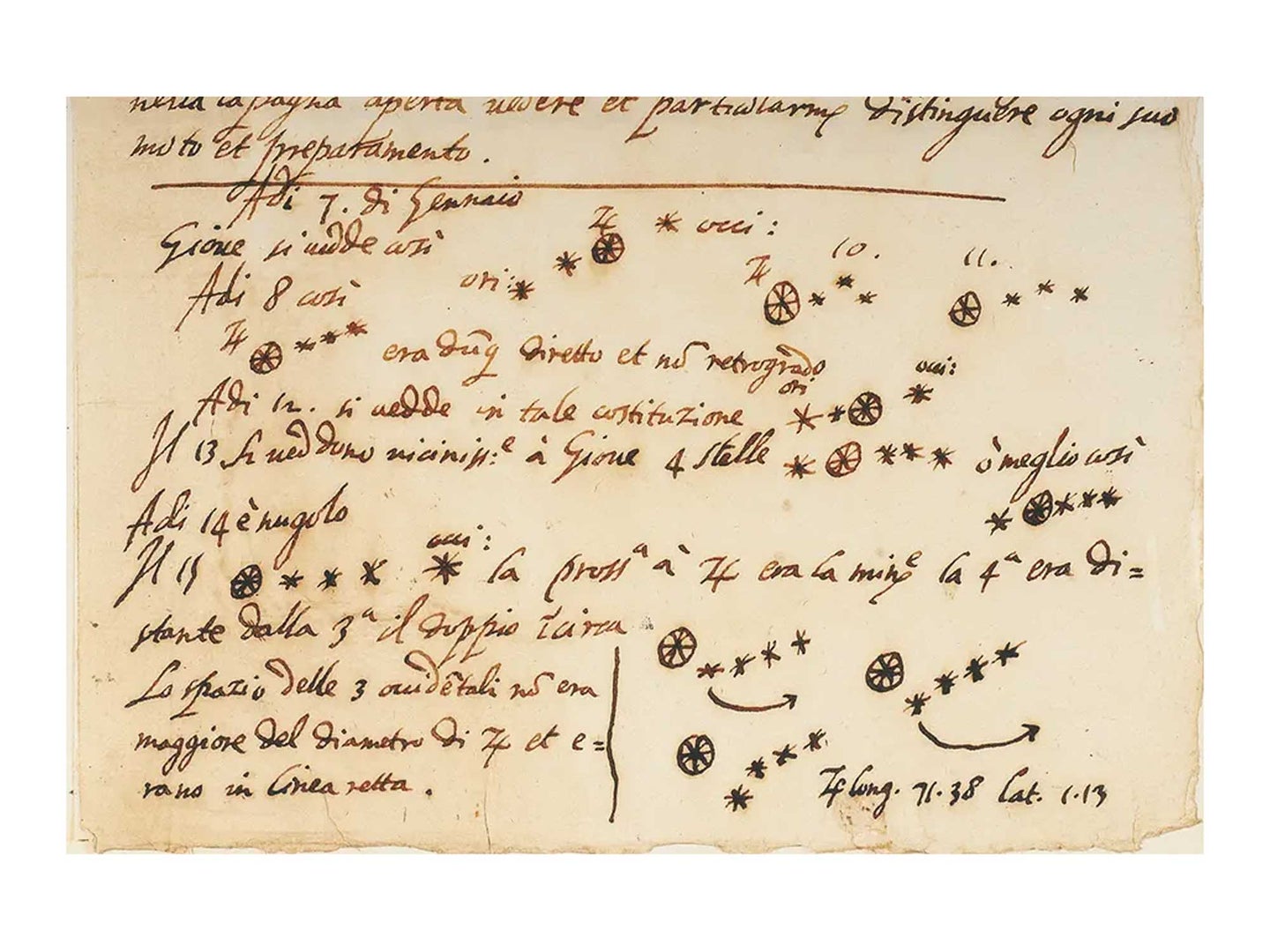
As with not trusting absolutely everything you read online, a healthy dose of skepticism seems necessary when handling documents from the 17th Century. An investigation into what was thought to be a prized Galileo Galilei manuscript from the University of Michigan has revealed that it is indeed a fake.
On the top half of the document is the draft of a letter supposedly written by the famed Italian astronomer accompanying his official presentation of a recently built telescope to the Doge of Venice on August 24, 1609. This newly built telescope helped Galileo observe the moons of Jupiter, which he originally believed to be stars. A draft of Galileo’s notes on his observations of Jupiter’s moons from January 7 to 15, 1610 are seemingly on the bottom half of the manuscript.
While working on a new book about Galileo, Georgia State History professor and historian Nick Wilding raised questions about the document. According to the University of Michigan Library, Wilding was concerned with the dating of the paper—specifically, monograms on the watermark that dated it to no earlier than the 18th Century, well after Galileo’s time. The fake is suspected to be the work of a 20th Century forger Tobia Nicotra.
In an interview with The New York Times, Wilding said, “As soon as I heard the word ‘Nicotra,’ I got the little ‘Spidey sense.'” He contacted Curator Pablo Alvarez who told the Times he had a “sinking feeling” seeing Wilding’s name on the email given his track record of spotting fake documents.
Wilding teaches a summer course on forgery at the University of West Virginia’s Rare Book School and in 2012, he correctly identified a fake copy of Galileo’s Sidereus Nuncius. He also uncovered a forged Galileo letter by Tobia Nicotra at the Morgan Library in New York City. He is working to uncover other Galileo forgeries while researching his next book.
The genuine version of the letter is currently at the Archivio di Stato di Venezia in Venice, while Galileo’s notes on the moons of Jupiter are part of the Sidereus Nuncius Dossier at the Biblioteca Nazionale Centrale di Firenze in Florence.
These kinds of forgeries of old documents are nothing new. In 2021, a team of conservators at Yale University determined that a 15th Century map of Vinland thought to be the earliest European depictions of North America was a fake made in the 20th Century. Their study also revealed that the deceit was intentional, when they uncovered instructions on how to forge such an old map on the back of the document itself. Additionally, a series of forged love letters written by President Abraham Lincoln were published in The Atlantic Monthly in 1929.
The post Fake Galileo manuscript suspected to be a 20th-century forgery appeared first on Popular Science.
from Popular Science https://ift.tt/DGhqaYv



0 Comments